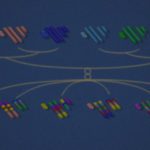Link to Pubmed [PMID] – 20091755
Link to DOI – 10.1002/bies.200900027
Bioessays 2010 Feb; 32(2): 132-42
Positional cloning of the quantitative trait locus (QTL) still encounters numerous difficulties, which explains why thousands of QTL have been mapped, while only a few have been identified at the molecular level. Here, we focus on a specific mapping tool that exists in plant and animal model species: interspecific recombinant congenic strains (IRCSs) or interspecific nearly isogenic lines (NILs). Such panels exhibit a much higher sequence diversity than intraspecific sets, thus enhancing the contrasts between phenotypes. In animals, it allows statistical significance to be reached even when using a limited number of individuals. Therefore, we argue that interspecific resources may constitute a major genetic tool for positional cloning and for understanding some bases of speciation mechanisms.

